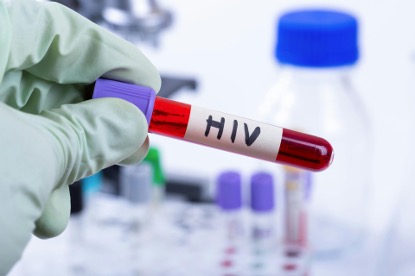FDA Approves Johnson & Johnson’s Edurant PED for Pediatric Patients With HIV
March 23, 2024
Source: drugdu
 389
389
Davy James
Expanded indication for Edurant in combination with other antiretroviral therapies includes treatment-naïve children with HIV-1 RNA <100,000 copies/mL aged at least 2 years and weighing between 14 kg and 25 kg.
 The FDA has approved an expanded indication for Johnson & Johnson’s Edurant PED (rilpivirine) in combination with other antiretroviral therapies (ART) to treat HIV-1 in treatment-naïve children (with HIV-1 RNA <100,000 copies/mL) aged at least 2 years and weighing between 14 kg and 25 kg.1 Edurant is an HIV-1 specific, nonnucleoside reverse transcriptase inhibitor previously approved in combination with ART in treatment-naïve patients 12 years of age and older who weigh at least 35 kg with HIV-1 RNA less than or equal to 100,000 copies/mL.
The FDA has approved an expanded indication for Johnson & Johnson’s Edurant PED (rilpivirine) in combination with other antiretroviral therapies (ART) to treat HIV-1 in treatment-naïve children (with HIV-1 RNA <100,000 copies/mL) aged at least 2 years and weighing between 14 kg and 25 kg.1 Edurant is an HIV-1 specific, nonnucleoside reverse transcriptase inhibitor previously approved in combination with ART in treatment-naïve patients 12 years of age and older who weigh at least 35 kg with HIV-1 RNA less than or equal to 100,000 copies/mL.
“Decades of experience with the global HIV epidemic have made it clear that new and improved treatment options are needed to support the diverse population of people living with HIV on their treatment journey,” Penny Heaton, MD, Global Therapeutic Area Head, Infectious Diseases and Vaccines at Johnson & Johnson, said in a press release. “While the population of young children living with HIV is small, additional treatment options remain key to ensuring that each person living with HIV can be matched to a treatment regimen that is right for them.”1
The regulatory action was based on findings from the PAINT (NCT00799864) and PICTURE (NCT04012931) trials conducted in pediatric patients. The pivotal Phase II PAINT trial analyzed long-acting Edurant with other ART in pediatric patients weighing 10 kg or more who are virologically suppressed and treatment-experienced (with HIV-1 RNA below 50 copies/mL). The Phase II PICTURE trial evaluated Edurant in treatment-naïve pediatric patients weighing 10 kg or more, with HIV-1 RNA less than or equal to 100,000 copies/mL.2
These trials found that the combination effectively suppressed HIV in treatment-naïve (with HIV-1 RNA <100,000 copies/mL) pediatric patients. Patients aged at least 2 years weighing at least 25 kg can safely be administered standard Edurant 25 mg oral tablets or the newly approved Edurant PED 2.5 mg oral tablets, which were developed to help with administration and weight-adjusted dosing in children.
The most frequently reported adverse events (AEs) associated with Edurant are depression, headache, insomnia, and rash. The most common severe AEs associated with Edurant are rash and allergic reaction alongside fever, tiredness, difficulty breathing, skin swelling, joint ache, and redness. Additionally, the manufacturer cautions that Edurant should not be taken with anti-seizure, anti-tuberculosis, or proton pump inhibitor medications.
Edurant should not be used by patients taking carbamazepine; oxcarbazepine; phenobarbital; phenytoin; rifampin; rifapentine; more than a single dose of dexamethasone; St. John’s wort (Hypericum perforatum); esomeprazole; lansoprazole; omeprazole; pantoprazole; and rabeprazole.
Long-acting Edurant is the first ever short-term long-acting injectable HIV-1 treatment option approved for children aged 12 years and older. It was previously approved in combination with Vocabria (cabotegravir) for the short-term treatment of HIV-1 infection in patients aged 12 years and older who weigh at least 35 kg and are virologically suppressed (HIV-1 RNA less than 50 copies/mL). The indication includes patients 12 years of age and older who weigh 35 kg minimum, as well as for virologically suppressed adults on ART with no prior history of treatment failure.
Read more on
- Breaking the Mold and Forging a New Path! From Insulin Technology Pioneer to Global Innovation Competitor December 4, 2025
- A subsidiary of Kingfriend Pharmaceutical Co., Ltd. has received FDA approval for its self-developed injectable dapavancin December 4, 2025
- Major ophthalmic new drug successfully completed Phase III trials December 4, 2025
- Simcere Pharmaceutical and Wangshan Wangshui have reached an exclusive licensing agreement for deuterium remidevir hydrobromide for new indications such as RSV infection December 4, 2025
- SAL0140 tablets approved for clinical trials for the treatment of chronic kidney disease December 4, 2025
your submission has already been received.
OK
Subscribe
Please enter a valid Email address!
Submit
The most relevant industry news & insight will be sent to you every two weeks.



